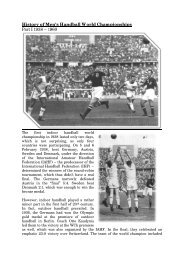Beach handball - IHF
Beach handball - IHF
Beach handball - IHF
Create successful ePaper yourself
Turn your PDF publications into a flip-book with our unique Google optimized e-Paper software.
3) During an excessively long build-up phase.<br />
In principle, the team must always be allowed a build-up phase with a preparatory passing<br />
play, before they can be expected to start a targeted attacking situation.<br />
Typical indications of an excessively long build-up phase are:<br />
- the team's attack does not lead to any targeted attacking action;<br />
Note: “targeted attacking action” exists particularly when the attacking team uses<br />
tactical methods to move in such way that they gain spatial advantage over the<br />
defenders, or when they increase the pace of the attack in comparison with the<br />
build-up phase);<br />
- players are repeatedly receiving the ball while standing still or moving away from<br />
the goal;<br />
- repeated bouncing of the ball while standing still;<br />
- when confronted by an opponent, the attacking player: turns away prematurely,<br />
waits for the referees to interrupt the game, or gains no spatial advantage over the<br />
defender;<br />
- active defensive actions: active defensive methods preventing the attackers from<br />
increasing the pace, because the defenders block the intended ball movements<br />
and running paths;<br />
- the attacking team achieves no clear increase in pace from the build-up phase to<br />
the finishing phase.<br />
4) After showing the forewarning signal<br />
After showing the forewarning signal, the referees should allow a build-up phase of at<br />
least 5 seconds. (The referees should recognize and allow that younger players and<br />
teams at lower levels may require more time). If after this buildup phase there is no clear<br />
increase in pace and no targeted attacking action can be recognized, then the referees<br />
must conclude that the team in possession of the ball is guilty of passive play.<br />
Note: The referees must be careful not to take action against passive play precisely at the<br />
moment when the attacking team is actually trying to shoot or undertake a move against<br />
the goal of the opponents.<br />
How the Forewarning Signal should be shown:<br />
If a referee (either the court referee or the goal-line referee) recognizes the<br />
emergence of passive play, he lifts the arm (Hand Signal 17) and keeps it up<br />
until the next interruption of the game to indicate the judgment that the team in<br />
possession of the ball is not trying to get to a scoring opportunity. The other<br />
referee should also give the forewarning signal. (The referees should give the<br />
signal with the arm that is closest to the team benches).<br />
52




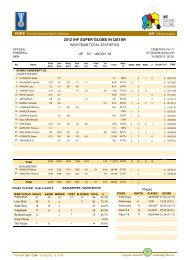

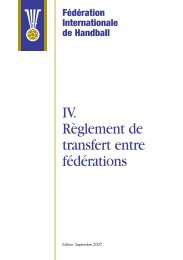
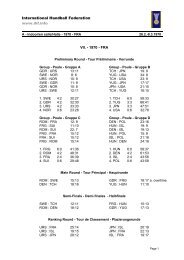
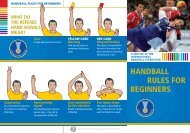
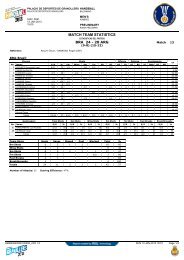

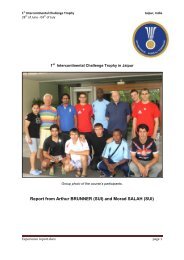
![[IHF- Referee list 2012/2013]](https://img.yumpu.com/18217761/1/184x260/ihf-referee-list-2012-2013.jpg?quality=85)
